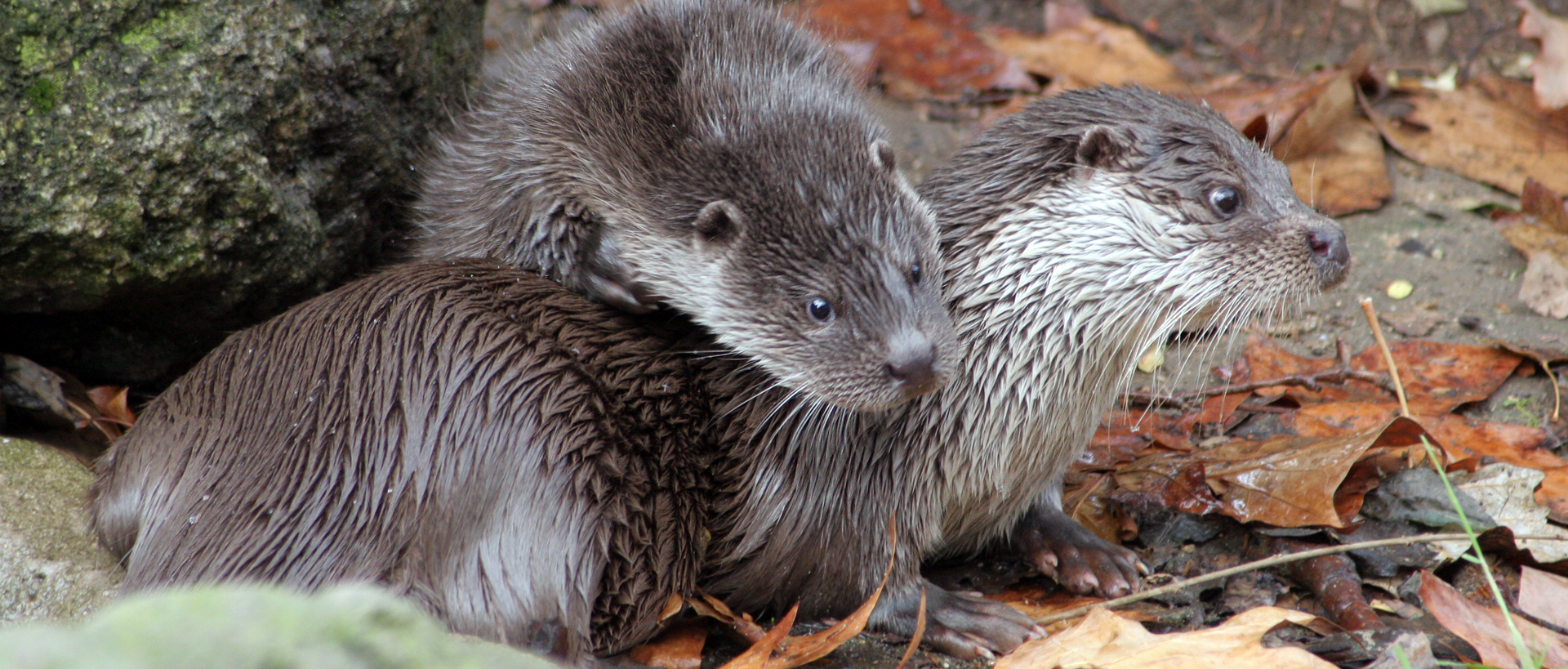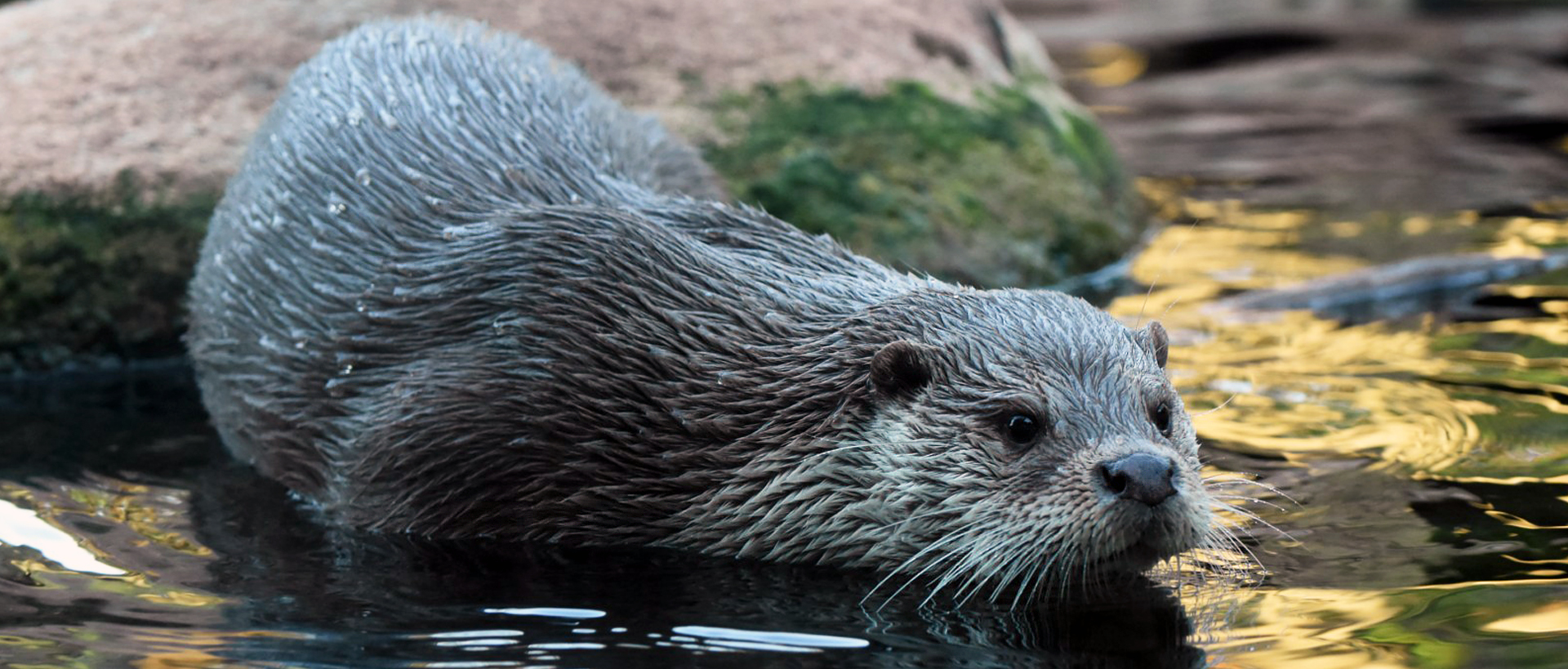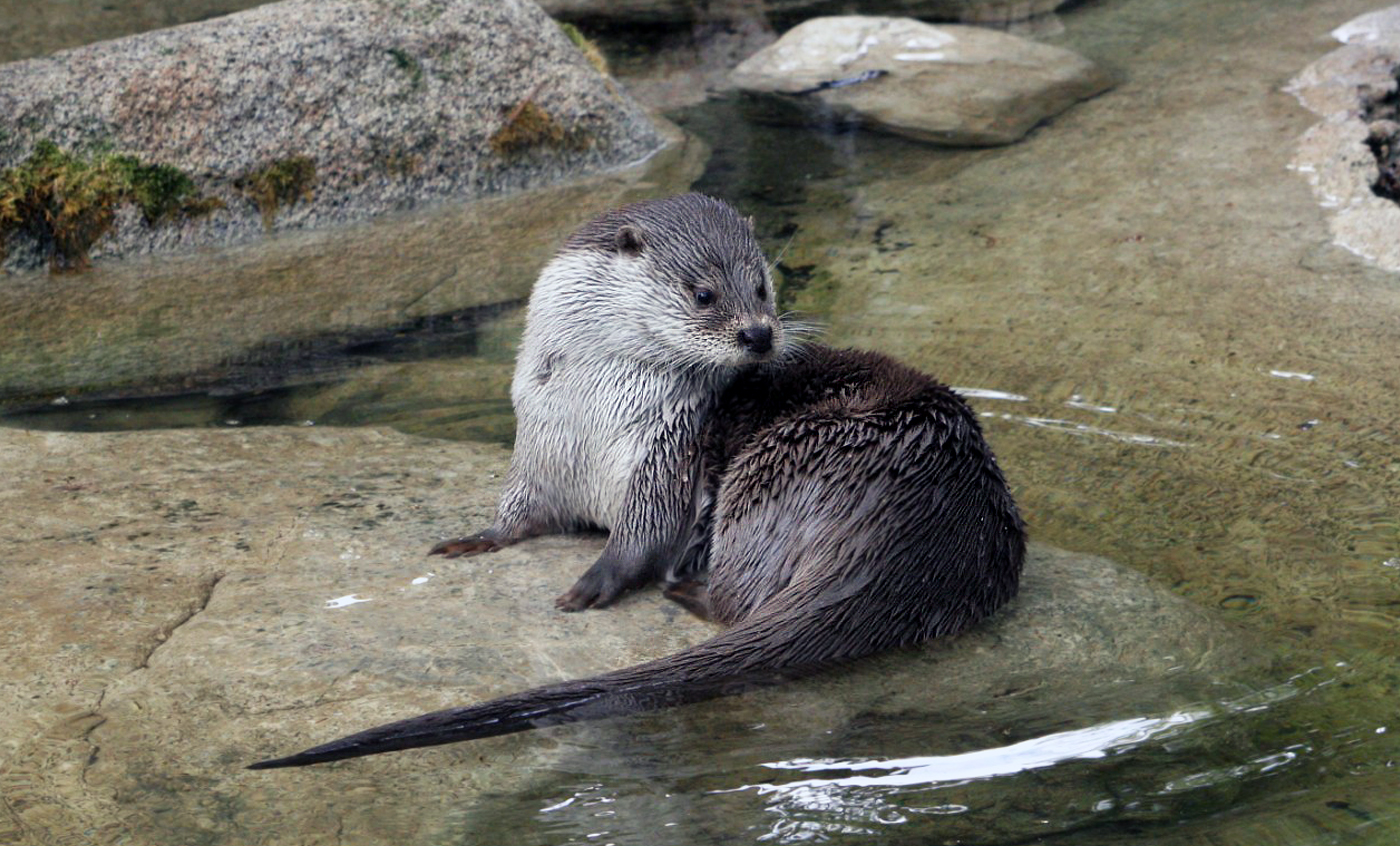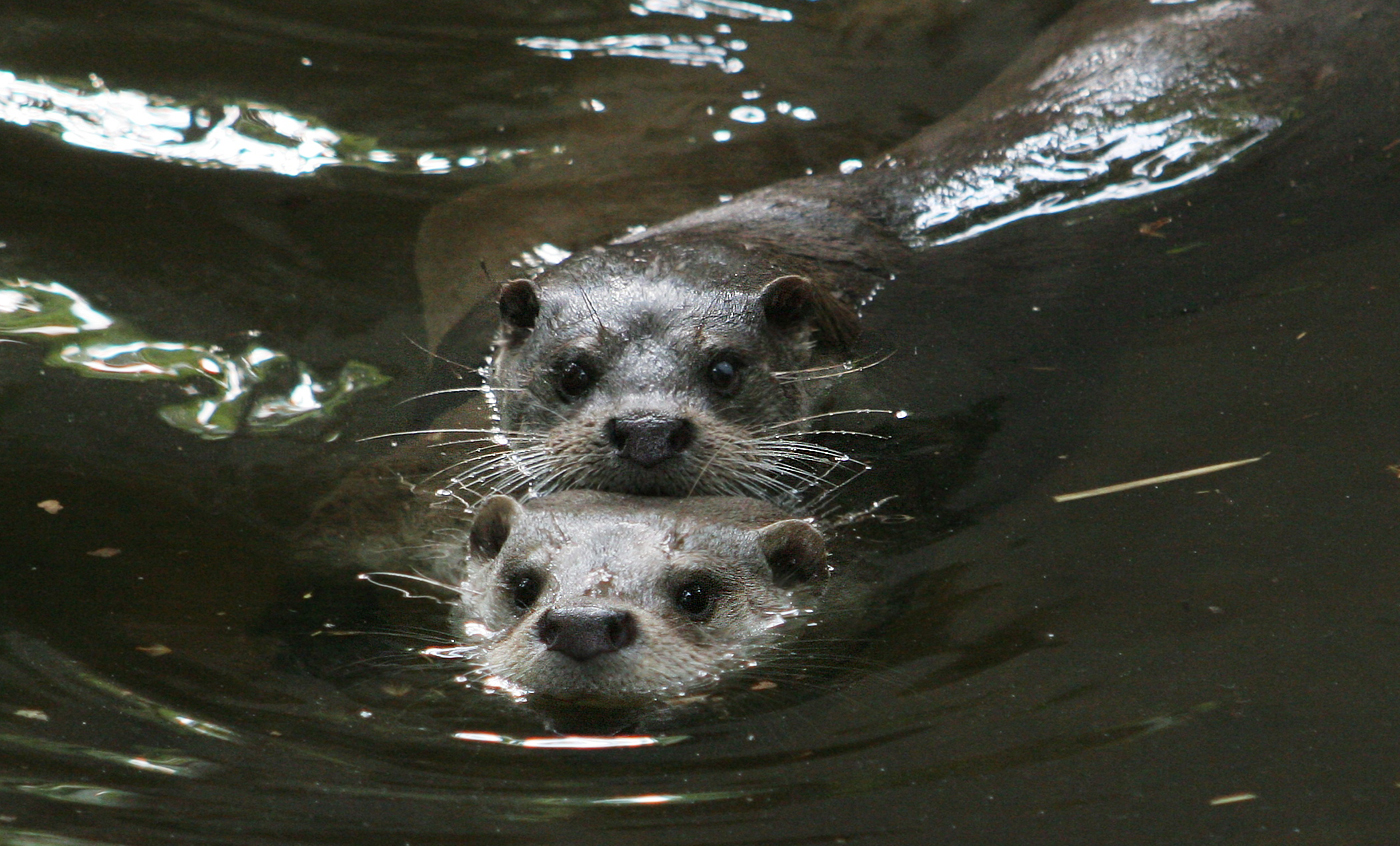Eurasian otter
The otter’s webbed feet prove it is an excellent swimmer. It can be found anywhere from high mountain streams down to river mouths, always provided the water is clean.
It feeds mainly on fish, but also catches river crabs, water snakes and some small mammals which it detects with its long, sensitive whiskers, even in poor visibility, as it usually comes out at dusk and night time.
Breeding program
Natural habit
Europe, Asia and northern Africa.
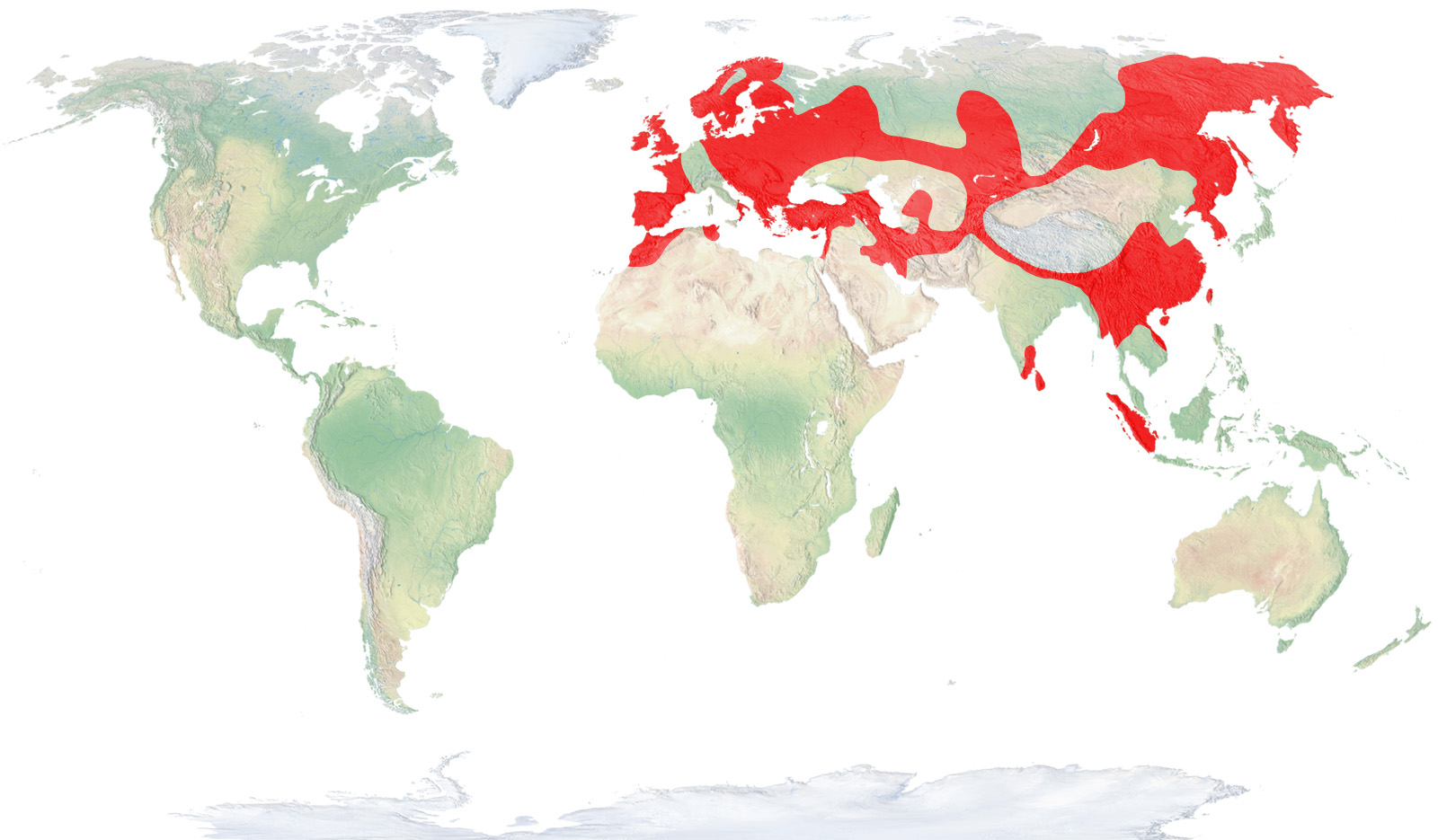
- Distribution / Resident
- Breeding
- Wintering
- Subspecies
Risk level
- Extint
- Extint in the wild
- Critically endangered
- In Danger
- Vulnerable
- Near threatened
- Minor concern
- Insufficient data
- Not evaluated
Taxonomy
Physical characteristics
Biology
Reproduction
Biology
The Eurasian otter is a mammal that is completely adapted to aquatic life. Reaching up to 1,20 m long, including the tail, and not weighting more than 10 kg, it has shiny and dense hair, 2-3 cm long, which is waterproof thanks to fat secreted by its glands, completely impregnating its body. With a fully hydrodynamic silhouette and interdigital webbing, these authentic subaquatic acrobats swim propelling themselves with their tails, reaching speeds of 11 km/h.
Rivers, ponds, lakes, lagoons, marshlands and coastal areas as well.
It is an expert fisher, which is its main source of food, making for up to 95 to 100% of its diet. In our country, the preferred fish species of otters belong to the cyprinids family: barbels Barbus sp., nase Chondrostoma toxostoma, chub Leuciscus cephalus, gudgeon Gobio gobio or carp Cyprinus carpio, although in mountain waters they also eat trout Salmo trutta and Salmo gairdneri.
Actually, their favourite prey used to be European eel Anguilla anguilla, but it has currently disappeared or is too scarce in the Catalan rivers where otters live. Besides fish, it also captures native crayfish Austropotamobius pallipes, in the few spots this crustacean can still be found, red swamp crayfish Procambarus clarkii, an invasive alien species that currently makes up for great part of its diet, amphibians, reptiles (especially viperine water snakes Natrix maura) and, occasionally, insects, birds and small mammals.
Despite being able to breed all year, reproduction usually takes place at the end of spring and at the beginning of summer. The holts of these animals are located on the riverbank, which usually can be entered from underwater, which allows them to enter without being spotted, as well as from the riverbank, well hidden among vegetation.
After a gestation of 60-63 days, two or three pups are born (sometimes up to five or six), which are breastfed by their mother for three or four months. Mothers are also responsible for teaching young otters to live on their own, a learning that takes more than one year.
Preferably crepuscular and nocturnal, it is a rather territorial animal: males defend wide stretches of the river of up to 15 km, against other males, hiding in females’ territories, which are smaller (normally less than 7 km). To mark its territory, it uses faeces with a characteristic scent and aspect, that it deposits in prominent spots, such as rocks emerging from water, stranded logs, sandbanks, under bridges, etc.
Underwater, they close their ears and nostrils, slow their heart rate and, therefore, blood circulation, allowing them to remain submerged for three to four minutes. In unclear waters with low visibility, their long tactile whiskers play an important role.
Otter presence is a sign of the good health of the waters they inhabit. This species is nowadays critically endangered in great part of its original distribution area, due to pollution, overexploitation of water, destruction of riverside forests and direct hunting.
Luckily, in Catalonia the otter population is recovering significantly during the last years, thanks to the improvement of fresh water quality and thanks to the success of the reintroduction project started in the Natural Park of Aiguamolls de l’Empordà at the end of the last century, in collaboration with the zoo of Barcelona, who also takes part in the EEP of this species.



